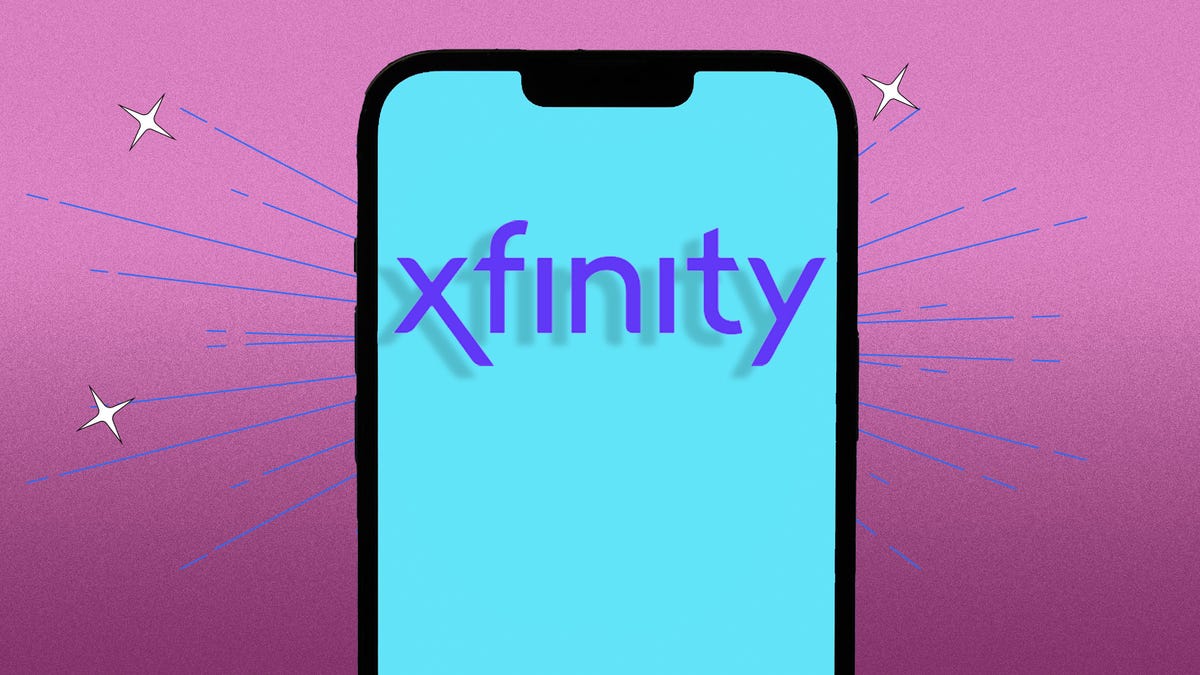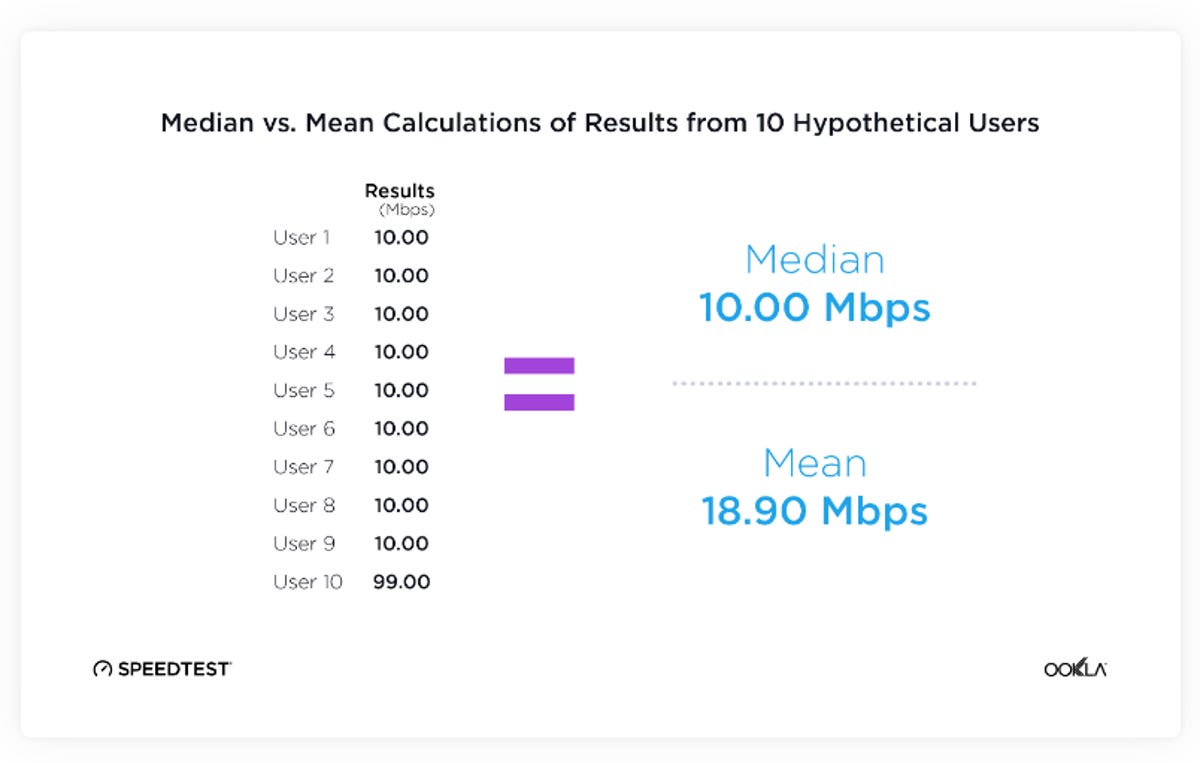Xfinity Speed Test Results: How Did Comcast's Internet Service Fare?
CNET digs into the latest Ookla speed test data and examines what it says about the nation's top cable broadband provider.
Our internet connections are increasingly becoming the lifeblood of our households. Whether you're working from home, taking extra online courses, streaming The Last of Us or overhauling your place with all the best smart home devices, your internet service provider is almost as important as your gas, water and electricity suppliers. What's one of the best ways to ensure your ISP delivers on its promises? Run a speed test.
A speed test will give you a snapshot of the megabits-per-second download and upload speeds you're getting from your provider. There are several good internet speed tests out there you could use. If you're a Comcast Xfinity customer, in particular, Xfinity boasts its own speed test, available at Speedtest.Xfinity.com. But as I delve more specifically into Xfinity speed test results, this page will largely reflect data from Speedtest.net. It's the tool from Ookla, which quarterly publishes the
results gathered from millions of customer uses of its speed test.
Where did Xfinity speed test results place it among the top US internet providers?
For the first quarter of 2023, Xfinity fell from the top spot among the country's biggest ISPs. It landed just short of Spectrum, which held the pole position midway through 2022.
Fastest internet providers in the US
| Provider | Median download speed |
|---|---|
| Spectrum | 235Mbps |
| Xfinity | 233Mbps |
| Cox | 219Mbps |
| Optimum | 196Mbps |
| Frontier | 190Mbps |
| Verizon | 186Mbps |
| AT&T Internet | 180Mbps |
In order to qualify as one of the country's top internet providers, an ISP must appear in 3% or more of the total test data taken during the three-month period. For example, EPB, a provider in Chattanooga, Tennessee, boasts the country's fastest residential internet plan at 25 gigabits per second. But since it's only available in that portion of the country, it won't show up on the national list (though it certainly registered in the state of Tennessee).
Also of note, that 3% threshold is based on the data taken from tests run by customers across the country, not simply whether a provider covers 3% of the country. T-Mobile Home Internet, for example, is now available to 89% of the country, according to the Federal Communications Commission's National Broadband Map. However, its customer base, which has grown to over 3 million subscribers, was not quite large enough for it to crack into consideration on that top list.
Ookla speed test info doesn't use its dataset's average (or mean) but the median, aiming to better represent the typical customer's experience.
Does that mean every Xfinity customer will get 233Mbps?
Though Xfinity speed test results with Ookla garnered it a median download speed rating of 233Mbps, that doesn't equate to every Xfinity subscriber getting at least 233Mbps. But it does show that most Xfinity customers will have a consistent internet experience. In fact, Ookla has a "Consistency" ranking -- which shows the percentage of results that registered above broadband speed (25Mbps download and 3Mbps upload) -- and Xfinity landed near the top of that chart also with a 91.7% rating.
That can also be combined with the FCC's recent findings that over 90% of participants experienced actual median download speeds that were at least 95% of the ISP's advertised download speed. That's certainly another good way to determine consistency for the customer. But what are the advertised speeds offered by Xfinity?
Available internet speeds from Xfinity
Most ISPs offer three to five speed tiers, but Xfinity is unique in that it boasts seven to eight different internet speed options, depending on your location. That's quite a bit more choice for customers than one normally encounters.
Xfinity speed tiers
| Plan | Max speeds |
|---|---|
| Connect | 75Mbps download, 10Mbps upload |
| Connect More | 200Mbps download, 10Mbps upload |
| Fast | 400Mbps download, 10Mbps upload |
| Superfast | 800Mbps download, 20Mbps upload |
| Gigabit | 1,000Mbps download, 20Mbps upload |
| Gigabit Extra | 1,200Mbps download, 35Mbps upload |
| Gigabit X2 | 2,000Mbps download, 50Mbps upload |
| Gigabit Pro | 6,000Mbps download, 6,000Mbps upload |
Brian L. Roberts, chairman and CEO of Comcast, said during a January earnings call that Gigabit Plus customers comprise roughly one-third of Xfinity broadband subscribers. That's a bit higher than OpenVault's latest data for internet customers across the US, which has gigabit (and above) consumption at 15%. Overall, according to OpenVault, most customers (55%) opt for a plan of 200-400Mbps. The rest of the data shows 10% go with 100-200Mbps, 8% are in the 50-100Mbps category, 7% choose 500-900Mbps and 5% are on plans under 50Mbps.
For Xfinity, all plans are a hybrid fiber-coaxial cable connection, so customers' download speeds will be much faster than their upload speeds. The one exception is the Gigabit Pro plan, which is a 100% fiber connection. While it's theoretically available throughout Xfinity's national footprint, FCC numbers indicate it's only available to approximately 4% of Xfinity's customer base.
US states where Xfinity was the top ISP
| State | Median download speed |
|---|---|
| Arizona | 237Mbps |
| Colorado | 245Mbps |
| Delaware | 237Mbps |
| Kentucky | 245Mbps |
| Massachusetts | 227Mbps |
| Michigan | 237Mbps |
| New Hampshire | 240Mbps |
| New Mexico | 233Mbps |
| Oregon | 236Mbps |
| Pennsylvania | 231Mbps |
| Washington | 237Mbps |
Comcast's Xfinity internet service is available in 39 states and the District of Columbia, so that gives it a decent chance at grabbing the top spot in a number of states. It had the slowest showing in Massachusetts at 227Mbps and its fastest download speed at 245Mbps in both Colorado and Kentucky.
US cities where Xfinity was the top ISP
| City | Median download speed |
|---|---|
| Albuquerque, New Mexico | 238Mbps |
| Aurora, Colorado | 260Mbps |
| Baltimore, Maryland | 209Mbps |
| Colorado Springs, Colorado | 255Mbps |
| Denver, Colorado | 232Mbps |
| Fort Wayne, Indiana | 203Mbps |
| Fremont, California | 207Mbps |
| Fresno, California | 248Mbps |
| Memphis, Tennessee | 185Mbps |
| Miami, Florida | 202Mbps |
| Portland, Oregon | 218Mbps |
| Sacramento, California | 233Mbps |
| San Jose, California | 237Mbps |
| Seattle, Washington | 217Mbps |
| St. Paul, Minnesota | 215Mbps |
| Stockton, California | 244Mbps |
| Tucson, Arizon | 245Mbps |
As for city speeds, the Ookla data takes into account only the top 100 most populous cities in the country. On that list, Xfinity was the fastest provider in 17 cities, which again put it in second place to Spectrum, which grabbed the top spot in 18 US cities. Memphis, Tennessee, brought up the rear for Xfinity, with a median download speed of 185Mbps (that also put it at the very bottom of the list of the top 100 US cities). Xfinity scored its fastest median download speed in Aurora, Colorado, with 260Mbps.
Xfinity speed test: Final thoughts
If you've read any of CNET's home internet coverage, you've heard us say that fiber internet trumps cable internet in just about every way. That's certainly true. But most fiber ISPs with a large national footprint -- AT&T, CenturyLink, Frontier, Optimum and Verizon -- don't exclusively offer fiber internet plans. Their coverage areas also include a mix of slower connection types like digital subscriber line. The speed test results in those areas will be significantly lower than the fiber numbers, thus making the providers' total numbers lower. But Xfinity, and other cable internet providers that don't have to deal with DSL dragging down their numbers, will see a much more consistent performance across the country. In that way, cable trumps the fiber-DSL combo.


